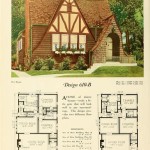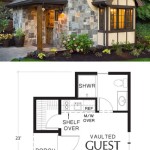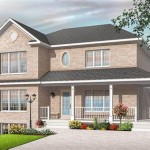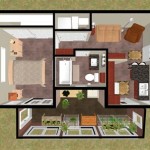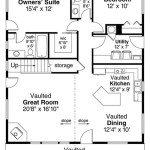Purple Martin Bird House Plans are detailed diagrams or blueprints that guide the construction of specialized birdhouses designed to attract and provide nesting sites for Purple Martins. Purple Martins are highly social birds known for their aerial acrobatics and their ability to consume large quantities of insects, making them beneficial to both nature and agriculture.
These birdhouses are specifically designed to meet the unique nesting requirements of Purple Martins, such as their preference for multi-compartment houses with specific dimensions and ventilation. By providing suitable housing, Purple Martin Bird House Plans help ensure the conservation and well-being of these avian species while offering bird enthusiasts the opportunity to observe and enjoy their remarkable behavior.
In the following sections, we will explore the intricacies of Purple Martin Bird House Plans, examining their design principles, construction materials, and effective placement techniques. Understanding these aspects will empower you with the knowledge to create a welcoming and suitable habitat for these captivating birds.
To ensure successful Purple Martin nesting and colony establishment, consider the following critical points when designing and constructing your birdhouse:
- Compartment Size: 6″ x 6″ x 6″
- Entrance Hole: 2″ diameter
- Ventilation: Adequate airflow
- Predator Guards: Protect against predators
- Mounting Height: 12-20 feet above ground
- Multiple Compartments: 12-24 compartments
- Gourd-Shaped: Mimics natural nesting sites
- Easy Cleaning: Removable floor for maintenance
By adhering to these guidelines, you can create an inviting and functional home for Purple Martins, promoting their nesting success and enhancing your backyard birdwatching experience.
Compartment Size: 6″ x 6″ x 6″
The compartment size of a Purple Martin birdhouse is crucial for the birds’ nesting success and overall well-being. The dimensions of 6″ x 6″ x 6″ have been meticulously determined to provide optimal space for nesting, while also ensuring the safety and comfort of the birds.
A compartment that is too small can cause overcrowding and discomfort, leading to reduced nesting activity and increased stress levels for the birds. Cramped conditions can also result in poor ventilation, which can contribute to respiratory issues and other health problems.
On the other hand, a compartment that is too large can make the birds feel exposed and vulnerable to predators. Additionally, a larger compartment requires more nesting material, which can be an energy-intensive task for the birds.
The 6″ x 6″ x 6″ compartment size represents a carefully considered balance between providing adequate space for nesting and ensuring the birds’ safety and well-being. It offers sufficient room for the birds to move around comfortably, build their nests, and raise their young, while also providing a sense of security and protection from external threats.
When constructing a Purple Martin birdhouse, it is essential to adhere to the recommended compartment size to create a suitable and inviting habitat for these beautiful and beneficial birds.
Entrance Hole: 2″ diameter
The entrance hole of a Purple Martin birdhouse plays a critical role in the nesting success and overall well-being of the birds. The 2″ diameter has been meticulously determined to strike a balance between accessibility and security.
A larger entrance hole would allow larger birds, such as European Starlings, to enter the compartment and compete with Purple Martins for nesting space. Starlings are known to be aggressive and can even kill Purple Martin chicks. A smaller entrance hole, on the other hand, would make it difficult for Purple Martins to enter and exit the compartment, potentially deterring them from nesting in the birdhouse altogether.
The 2″ diameter entrance hole is large enough to allow Purple Martins to easily enter and exit the compartment, while being small enough to deter larger, competing birds. It also helps to prevent predators, such as snakes and raccoons, from reaching into the compartment and harming the birds or their young.
In addition to the diameter, the placement of the entrance hole is also important. It should be positioned near the top of the compartment to provide the birds with a clear view of their surroundings and to help them avoid potential predators.
By following these guidelines, you can create a Purple Martin birdhouse with an entrance hole that is both accessible to the birds and secure from predators, promoting successful nesting and colony establishment.
Ventilation: Adequate airflow
Proper ventilation is essential for the health and well-being of Purple Martins. A well-ventilated birdhouse helps to regulate temperature and humidity levels, reducing the risk of heat stress and respiratory issues. It also helps to prevent the buildup of harmful gases, such as ammonia, which can be produced by bird droppings and nesting material.
To ensure adequate airflow, Purple Martin birdhouses should have multiple ventilation holes. These holes should be positioned near the top of the compartment, where warm air naturally rises. The holes should be large enough to allow air to circulate freely, but not so large that they compromise the structural integrity of the birdhouse.
In addition to ventilation holes, it is important to provide cross-ventilation by placing the entrance hole on one side of the compartment and the ventilation holes on the opposite side. This creates a flow of air through the compartment, helping to keep it cool and well-ventilated.
Proper ventilation is especially important during hot weather, when Purple Martins are more susceptible to heat stress. By providing adequate airflow, you can help to keep your Purple Martin tenants comfortable and healthy, promoting successful nesting and colony establishment.
Remember to strike a balance between ventilation and protection from the elements. While it is important to provide adequate airflow, you should also ensure that the ventilation holes are not so large that they allow rain or wind to enter the compartment.
Predator Guards: Protect against predators
Protecting Purple Martins from predators is crucial for the success of your birdhouse colony. Predators such as snakes, raccoons, and owls can easily access nesting compartments and prey on eggs, chicks, and adult birds. Predator guards provide an effective way to deter these predators and keep your Purple Martin tenants safe.
- Slippery Poles:
Slippery poles prevent predators from climbing up the supporting pole and reaching the birdhouse. They are typically made of metal or PVC pipe and are coated with a slippery substance, such as petroleum jelly or cooking oil. This makes it difficult for predators to grip the pole and climb up.
- Baffles:
Baffles are devices that are placed around the entrance hole to prevent predators from reaching into the compartment. They can be made of metal, plastic, or wood, and are designed to make it difficult for predators to get their heads or bodies into the compartment.
- Predator Guards:
Predator guards are physical barriers that are placed around the entire birdhouse to prevent predators from accessing the nesting compartments. They can be made of wire mesh, hardware cloth, or other sturdy materials, and are designed to keep predators out while allowing Purple Martins to enter and exit the birdhouse.
- Nest Boxes with Built-In Predator Guards:
Some nest boxes come with built-in predator guards, such as entrance holes that are too small for predators to enter or compartments that are inaccessible to predators. These nest boxes provide a convenient and effective way to protect Purple Martins from predators.
By implementing these predator protection measures, you can significantly reduce the risk of predation and help to ensure the success of your Purple Martin colony.
Mounting Height: 12-20 feet above ground
The mounting height of your Purple Martin birdhouse is a critical factor that affects the safety and success of your colony. Purple Martins prefer to nest in elevated locations that provide a clear view of their surroundings and protection from predators. Mounting the birdhouse at the appropriate height is essential for attracting and retaining Purple Martins.
- Visibility and Safety:
Mounting the birdhouse at a height of 12-20 feet above the ground provides Purple Martins with a clear view of their surroundings. This allows them to spot predators and potential nesting sites from a distance, enhancing their ability to avoid danger and select suitable nesting locations.
- Predator Protection:
Elevating the birdhouse makes it more difficult for ground-based predators, such as snakes and raccoons, to reach and access the nesting compartments. The height acts as a physical barrier, deterring predators and reducing the risk of predation.
- Reduced Disturbance:
Mounting the birdhouse at a higher elevation minimizes disturbances from humans and other animals. Purple Martins are sensitive to noise and activity, and a higher mounting height provides them with a quieter and more secluded nesting environment.
- Optimal Sunlight and Ventilation:
Placing the birdhouse at an appropriate height ensures that it receives sufficient sunlight for warmth and ventilation. This is especially important during the nesting season, when Purple Martins require a warm and well-ventilated environment for successful egg incubation and chick development.
By mounting your Purple Martin birdhouse at a height of 12-20 feet above the ground, you can provide your feathered tenants with a safe, comfortable, and productive nesting environment. This will increase the likelihood of attracting and retaining Purple Martins, promoting the success and longevity of your colony.
Multiple Compartments: 12-24 compartments
Providing multiple compartments within a Purple Martin birdhouse is essential for attracting and supporting a successful colony. Purple Martins are highly social birds that prefer to nest in colonies, and offering a range of compartment options increases the likelihood of attracting a larger number of birds.
- Colony Formation and Social Interaction:
Multiple compartments allow for the formation of larger colonies, facilitating social interaction and cooperative behaviors among Purple Martins. This social environment is important for their breeding success, as it provides opportunities for mate selection, courtship displays, and mutual support during nesting and chick-rearing.
- Increased Nesting Options:
Offering a range of compartment sizes and configurations provides nesting options that cater to the preferences of individual pairs. Some pairs may prefer larger compartments, while others may prefer smaller, more secluded spaces. By providing multiple compartments, you increase the chances of finding suitable nesting sites for a diverse population of Purple Martins.
- Reduced Competition and Conflict:
With multiple compartments, there is less competition for nesting sites, reducing the likelihood of conflicts and aggression among birds. Each pair can select a preferred compartment, minimizing territorial disputes and promoting a harmonious colony environment.
- Improved Nest Site Selection:
Multiple compartments allow Purple Martins to choose nesting sites that meet their specific needs. Some pairs may prefer compartments with certain orientations, ventilation levels, or proximity to the entrance hole. Providing a variety of options empowers the birds to select the most suitable nesting sites for successful reproduction.
The ideal number of compartments for a Purple Martin birdhouse is typically between 12 and 24. This range provides sufficient nesting options while ensuring that the birdhouse is not overcrowded or too difficult to maintain. By incorporating multiple compartments into your Purple Martin birdhouse, you can create an attractive and functional nesting environment that promotes colony formation, reduces competition, and enhances the overall success of your colony.
Gourd-Shaped: Mimics natural nesting sites
Purple Martins have evolved to nest in natural cavities, such as gourds and tree hollows. By designing birdhouses with a gourd-shaped exterior, you can mimic these natural nesting sites and make your birdhouse more attractive to Purple Martins.
- Familiar Shape and Texture:
The gourd-shaped design provides a familiar shape and texture that resembles the natural nesting sites of Purple Martins. This familiarity helps them to recognize and select your birdhouse as a suitable nesting location.
- Enhanced Camouflage and Protection:
The gourd-shaped exterior helps to camouflage the birdhouse within the surrounding environment, providing a sense of security and protection for the nesting birds. The rounded shape deflects predators and makes it more difficult for them to access the nesting compartments.
- Improved Ventilation and Drainage:
The gourd shape promotes natural ventilation and drainage, creating a healthier and more comfortable environment for the birds. The curved surface allows air to circulate freely, reducing the risk of heat stress and respiratory issues. Additionally, the shape facilitates water runoff, preventing water accumulation and potential damage to the birdhouse.
- Increased Occupancy Rates:
Studies have shown that gourd-shaped birdhouses have higher occupancy rates compared to traditional rectangular or square birdhouses. This is because the gourd shape better meets the nesting preferences and natural instincts of Purple Martins, making them more likely to select and utilize your birdhouse.
By incorporating a gourd-shaped design into your Purple Martin birdhouse, you can create a nesting environment that is both attractive and functional. This will increase the likelihood of attracting and retaining Purple Martins, promoting the success and longevity of your colony.
Easy Cleaning: Removable floor for maintenance
Maintaining the cleanliness of your Purple Martin birdhouse is crucial for the health and well-being of your feathered tenants. A clean birdhouse reduces the risk of disease transmission, parasites, and other health issues that can affect Purple Martins and their young. Incorporating a removable floor into your birdhouse design makes cleaning and maintenance a breeze, ensuring a hygienic and healthy nesting environment.
A removable floor allows you to easily access the interior of the birdhouse for regular cleaning and maintenance. You can remove the floor to sweep out nesting material, remove droppings, and disinfect the surfaces. This thorough cleaning helps to eliminate disease-causing bacteria, parasites, and mites that can accumulate over time. A clean birdhouse promotes better air quality, reduces the risk of respiratory issues, and creates a healthier environment for the birds.
Regular cleaning also allows you to inspect the birdhouse for any damage or structural issues. You can check for cracks, holes, or loose screws that may need repair. Early detection and repair of any problems can prevent further damage and ensure the longevity of your birdhouse. A well-maintained birdhouse provides a safe and secure nesting environment for Purple Martins, increasing the likelihood of successful breeding and colony establishment.
By incorporating a removable floor into your Purple Martin birdhouse design, you can ensure the cleanliness and longevity of your birdhouse, promoting the health and well-being of your Purple Martin colony.










Related Posts

